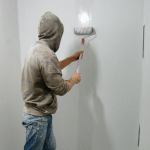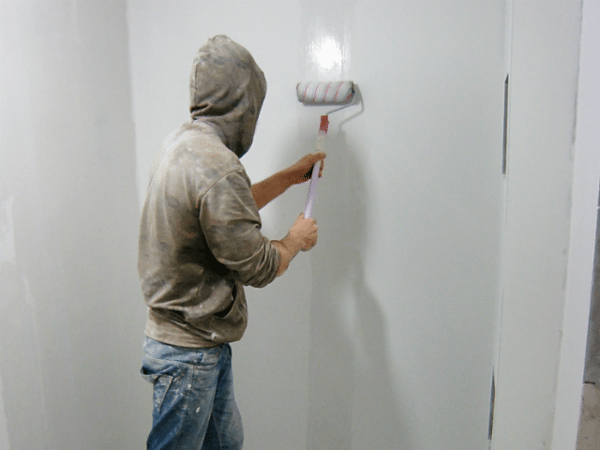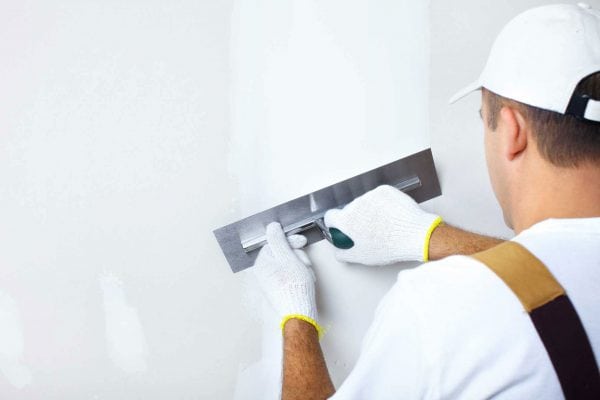Correctly perform puttying work - this means performing this process, taking into account all the subtleties. Any surface irregularities: dents, bumps, potholes, require special attention. Violation of the technology of the process in the future will affect the quality, and will cost additional money and damaged nerves.
Advice on how to properly putty surfaces is sufficient. The most controversy surrounding the rules of priming and the need for applying primer before each new layer of putty.
to contents ↑Types and features of putty mixtures
Using putty it is possible to eliminate irregularities and flaws that have differences from 5 to 12 cm. These building materials differ from plasters in their composition: they do not contain those substances that allow the filling of large potholes, they are only suitable for smoothing out minor flaws and blemishes.
Surfaces after applying putties are smooth and even, and minor flaws must be eliminated using sandpaper to grind the surface.
Putties are made based on:
- glue and chalk (gypsum, cement) - they are sold in the form of dry mixtures, in which water must be added before use;
- polymer fillers (these materials are more resistant to moisture) - are diluted with water twice: the first time to swell, the second to bring to the desired consistency.
In addition, putties are finishing and leveling (putties of the first layer). The first two layers of putty are intended for rough work, all irregularities are aligned with this layer. Manufacturers of this type of building materials pose a challenge to their products, which is the possibility of applying it in several layers.
It is necessary that with this method of conducting work, the surface of the walls and ceiling should not sprinkle or crack. Finishing (putties for painting) are applied with the last layer on top of all the rest.
Priming as the basis of all puttying
The main requirement for a puttied surface is that it should be smooth, even and not sprinkled. If ordinary gypsum putty is applied over the previous dry layer, then instead of adhesion, the previous layer will absorb liquid from the second or any other subsequent one. In this case, the surface quality will noticeably decrease. In the future, such a wall or ceiling will certainly begin to peel off and crumble.
Therefore, in the process of work, before each new layer, the second and each subsequent, without fail, the puttied surface must be primed:
- Between the loose lower layers of plaster and before the subsequent putties, a primer is applied, having the ability to penetrate deeply into the thickness of the applied materials. Thus, adhesion is ensured within two layers. The primer will not allow in the future to "slip" and crumble putty.In addition, primers with a special property of deep penetration hold the loose previous layers of plaster.
- It is better to apply acrylic-based primer to the layer of moderately absorbing putty. In case of its absence, a deep penetration primer is suitable.
- For waterproof putties it is better to use primers compatible with them. To find out which of the materials will be suitable, you need to look at the can in which the building material was purchased. On the putty packaging, it will be indicated on what basis it is made.
- In some cases, it is necessary to apply a primer twice, in order to create a better grip.
Quality control
The quality of each layer applied during operation must be checked. If you try to scoop up a small piece of the coating, and it peels off at the same time, it means that the putty work was carried out poorly and adhesion between the layers was not achieved.
To correct the situation, before applying the next leveling or finishing layer, you need to apply a deep penetration primer.
In addition to priming putty surfaces using factory and home-made mixtures, masters can advise before each new stage of work, to wet the surface with water once or twice. Thus, the layering of materials is carried out by the method of applying putty "wet".
To take this advice and carry out puttying in this way, you need to have a lot of professional experience. Beginners in this matter, attempting to do the finishing work with their own hands, should not take on tasks of increased complexity.








Unknowingly, he puttied the wall immediately with a finishing putty, having previously primed the wall with concrete contact. Because of the particles of quartz sand, it was necessary to put together again. What will happen if you do not prime before re-coating. And if I primed, I wanted to try pva glue. In what proportions to breed it?
You can sand and drive off a rough putty-leveling. Dissolve PVA glue with soil. It will be stronger. I did so on the ceiling. All hold on.